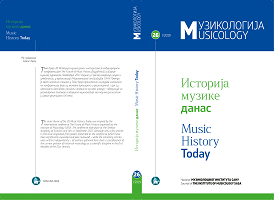Phenomenon of the Baltic Singing Revolution in 1987–1991: Three Latvian Songs as Historical Symbols of Non-Violent Resistance
Phenomenon of the Baltic Singing Revolution in 1987–1991: Three Latvian Songs as Historical Symbols of Non-Violent Resistance
Author(s): Jānis KudiņšSubject(s): Cultural history, Music, Post-War period (1950 - 1989), Sociology of Art
Published by: Muzikološki institut SANU
Keywords: fall of communist regime; singing revolution; Latvian cultural-historical traditions; songs; symbols;
Summary/Abstract: The denomination singing revolution (coined by Estonian artist Heinz Valk, b. 1936) is commonly used for events in Baltic States between 1987 and 1991 that led to the restoration of the independence of Estonia, Latvia and Lithuania. Three songs – the folk song Pūt, vējiņi! (Blow, Wind!), the choir song Gaismas pils (The Castle of Light) by the national classical composer Jāzeps Vītols (1863–1948) and the song Saule, Pērkons, Daugava (Sun, Thunder, Daugava) by the composer Mārtiņš Brauns (1951) – at that time in Latvia had a special significance in society. Each song represented references to different layers in Latvian cultural and political history. The characteristics of the three songs in the Singing Revolution process are based on the approach and methodology of distant (objective) analysis of cultural context and recent historical experience. As a result, this article reveals the meaning and reception of the three songs as symbols of nonviolent resistance during the fall of communist regime in Latvia in the late 1980s.
Journal: Muzikologija
- Issue Year: 1/2019
- Issue No: 26
- Page Range: 27-39
- Page Count: 13
- Language: English

